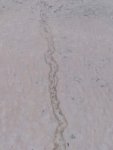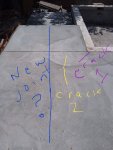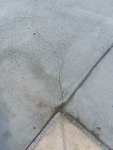Hi, folks. Deck was poured yesterday and is already showing cracks. Took some pics last night and again this am. Is this a sign of trouble or could it be fixed by cutting a new joint or two early this upcoming week? In terms of prep for pour, it was decent: rebar was raised in most places a few inches off ground, a fair amount of sand was dumped and sand bags stacked. Tamping was decent. What I've learned from this build is the workers are really only going to give 80%. I don't like to concede, but my options have been to fight EVERYTHING or yield in places. With the cracks here I'm wondering specifically--
1. Might a new joint or two alleviate the stress and prevent further cracking, or is this a very troubling sign?
2. If new joints are cut, will an epoxy cover up these cracks fairly welll? The deck will also receive two rounds of kool kote.
3. Is requesting these slabs get busted up and repoured the way to go?
Trying to anticipate my conversation with PB tomorrow.
Thank you!
1. Might a new joint or two alleviate the stress and prevent further cracking, or is this a very troubling sign?
2. If new joints are cut, will an epoxy cover up these cracks fairly welll? The deck will also receive two rounds of kool kote.
3. Is requesting these slabs get busted up and repoured the way to go?
Trying to anticipate my conversation with PB tomorrow.
Thank you!




